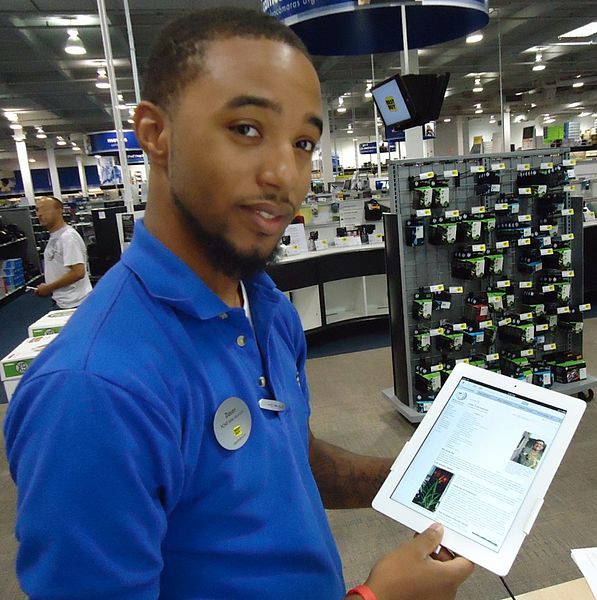
Yesterday, we looked at the demise of the Main Studio Rule at a time when radio’s opportunity to connect with fans is unlike any other digital medium. Not everyone agreed with our stance on the topic, as you can read by the many detailed comments that accompanied the post.
But whether you believe the FCC made the correct move – or not – the question about the power of radio’s physical presence in the communities it serves is a good one. And as it turns out, there are important lessons occurring right now in the retail sales world that have direct resonance to radio’s increasingly competitive environment.
Despite the explosion in ecommerce, the brick and mortar model is far from dead. Not every brand is shifting their business model to digital and mobile web. As we rush headlong into the holiday shopping bonanza, it is worth noting how some of the big players in retail are rethinking their positions. While Walmart is aggressively chasing Amazon in that space, other big retail names are reassessing their business models. And in many cases, that means a recommitment to personal audience interactivity that could only occur in a brick and mortar environment.
That’s Best Buy’s survival strategy. In September, New York Times writer Kevin Roose told their story in “Best Buy’s Secrets For Thriving in the Amazon Age.” You may recall not long ago, the retail chain was thought to be on the ropes, a likely casualty of eTail giant Amazon.
Best Buy CEO, Hubert Joly, explained his company’s turnaround formula, citing matching Amazon in price item by item, as well as transitioning his stores into showcase-and-ship operations. You can buy something from the Best Buy website, and then it quickly ships from their nearest location.
But perhaps the most important weapon in their “Beat Amazon” arsenal was a “focus on humans.” That translated to providing a much higher level of customer service – something that robotic ecommerce businesses can’t match.
Among other things, it meant reinstating a popular employee discount, fixing an internal search engine to make it easier and faster to find products in stock, and a wide-scale employee training program designed to turn Best Buy sales reps into mavens. That last item proved to be especially important in explaining complicated new technologies, such as virtual reality and smart appliances to in-store customers.
The personal, eye-to-eye, retail experience is becoming important to other brands, too. 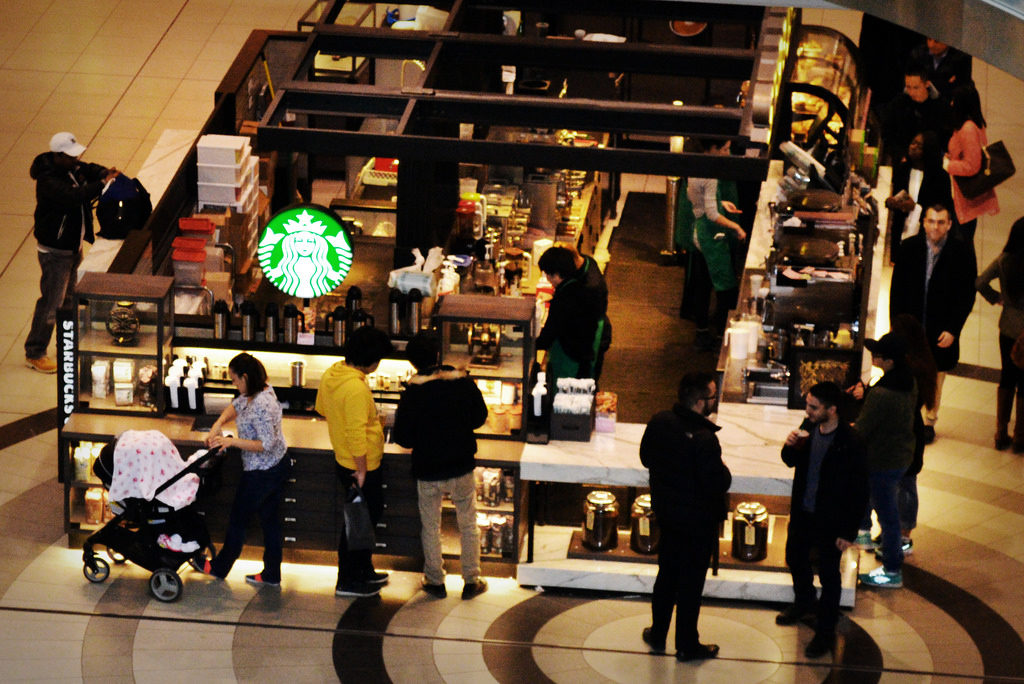
A case in point? Starbucks totally shuttered its online store earlier this month. Now, if you want to buy mugs, espresso makers, and yes, coffee, you have to walk into any of their 27,000 company owned retail stores around the world.
Starbucks’ chief executive, Kevin Johnson, explained to the New York Times that a “seismic shift” in retail means survival will come from the creation of unique, in-store experiences. Anybody – like Amazon – can sell Starbucks merch online (like Amazon), but the in-store experience must be a unique one.
And chairman Howard Schultz added:
“Every retailer that is going to win in this new environment must become an experiential destination.” And that’s very much analogous to radio’s edge over its many digital competitors, none of whom have physical presence in local communities big and small.
In an impersonal world of playlists and algorithms, radio’s ability to connect personally with audiences via personality appearances, meet-and-greets, and other “behind the velvet ropes” opportunities sets it apart from Pandora, SiriusXM, and the millions of podcasts vying for consumer attention.
Interestingly, even the most digitally-immersed generation is showing signs of valuing brick and mortar shopping experiences as much as their parents. Research by behavioral marketers SmartHQ indicates half of Millennials enjoy physical stores as a shopping destination:
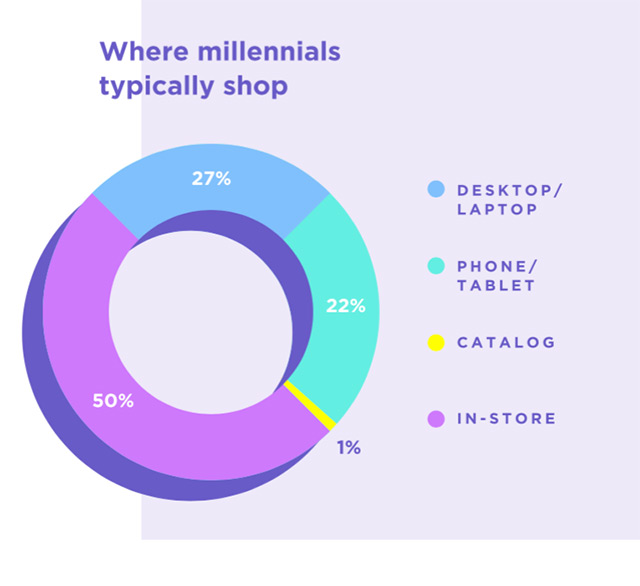
The study cites their brick and mortar motivation sounds much like the reasons why the older generations enjoy in-store shopping. We’re seeking out bargains, we know what we’re looking for, it’s a chance to do product research, and it’s fun to casually browse around a store.
Again, the experiential continues to emerge as a key driver in connecting consumers with brands. What unique experience does your radio station and its personalities provide your local residents can’t they get anywhere else? That’s an area in which to focus a station’s research and marketing efforts.
Radio is truly the only audio entertainment medium with the opportunity, the presence, and the existing audience relationships to do just that.
While broadcasters need to become more adept at mastering the digital tool kit (as Best Buy and Walmart have), a focus on customer service, event promotion, and audience experiences is the logical pathway for many radio brands.
These are some of the strategic underpinnings broadcasters need to understand and unlock in order to survive and thrive in the digital revolution.
And in a fascinating postscript, the company that’s been most responsible for disrupting brick and mortar retailers more than anyone – Amazon – is executing a retail double reverse. 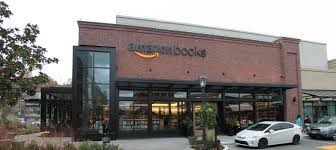
They’ve been opening physical stores called AmazonBooks over the past year or so. While online book sales is the powerful machine that’s revolutionized the way we shop, Amazon is also cognizant they can successfully connect with consumers in a brick and mortar setting.
The Motley Fool‘s Jeremy Bowman report that while some of Amazon’s motivation is to capitalize on those who enjoy shopping for books in stores, there are other keys to their strategy.
One is unlocking the value of its Amaon Prime membership, facilitating better discounts and other services to those who pony up $99 a year.
But the other factor revolves around Alexa. These AmazonBooks locations are perfect showcases for Amazon’s many devices, from Kindles to smart speakers. And as Bowman points out, these stores allow Amazon to maintain a degree of parity with Apple – a brand that has aced the shopping experience.
This move by Jeff Bezos – now the richest person in the world – echoes the experience of Mike Haile, VP/GM of the News-Gazette’s cluster of stations in Champaign-Urbana. Mike also hosts the morning show on Lite Rock 97.5 WHMS.
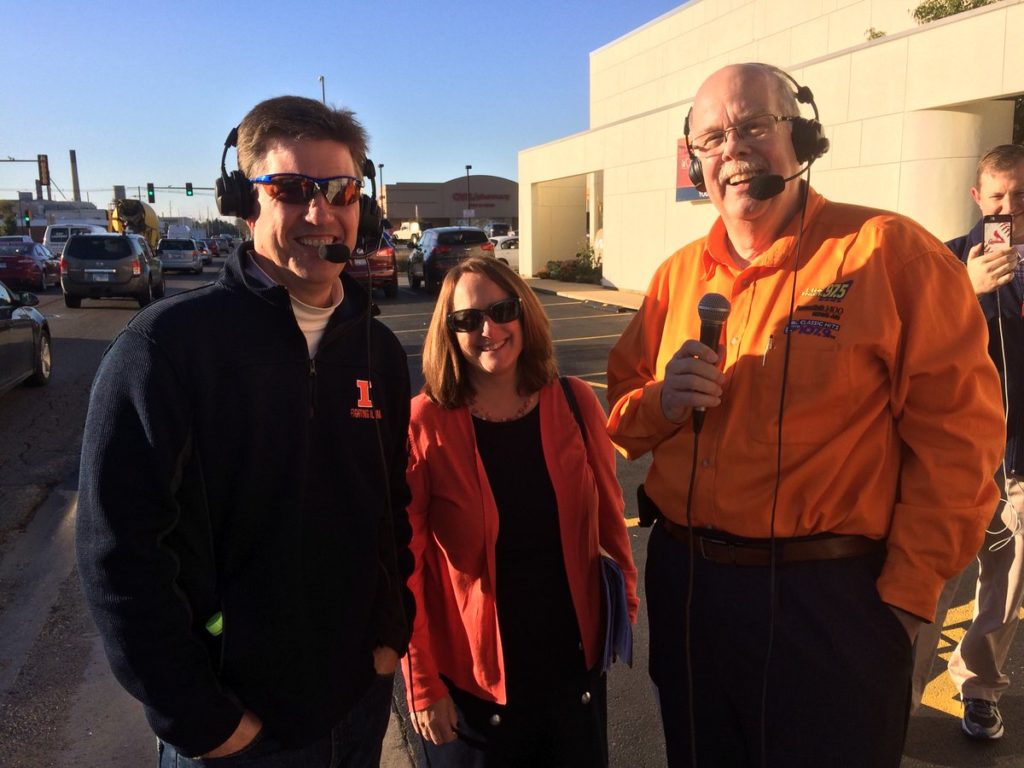
In a comment to yesterday’s post, Mike told this story:
“Our company made the strategic decision that after 69 years we would move our studios and offices back downtown into our co-owned Print and Digital offices. Two weeks ago, we moved our third and final station to join its two cluster mates in each station’s brand new street level showcase studios.
“How interested was the community in our move? Our morning team started their final show from the old studio and began a 2.5 mile trek downtown. Along the way, they made a point to stop in at virtually every morning show advertiser on the route and thanked them on the air for their support. The market’s leading morning television show asked to cover the event live by walking with the team.
“One Facebook post (non boosted) was seen by 93,000. That helped drive over 10,000 Facebook Live viewers who caught all or part of the walk.
“Brick and Mortar – where we still have a ‘live’ person in our studios 24/7. It’s all about delivering on listener expectations in Champaign-Urbana, Illinois.”
As it is throughout American radio.
The FCC can make decisions about whatever it wants to – including where broadcasts must locate their physical studios. And broadcasters can make their own decisions about what’s the best way to serve audiences in the Digital Media Age.
There’s a lot to be said for a brick and mortar community presence.
- What To Do If Your Radio Station Goes Through A Midlife Crisis - April 25, 2025
- A 2020 Lesson?It Could All Be Gone In A Flash - April 24, 2025
- How AI Can Give Radio Personalities More…PERSONALITY - April 23, 2025




For us, reaching out and touching the community is not built around our bricks and mortar. We want to identify all of the important events going on in our community and be a part of them. We want the local Goodwill to call us and verify we will be available for a specific date before they schedule their cool event. We also better look good when we get there. Nobody sees our studios. Nobody sees what our morning guy looks like at 5am, when he (or she) hits the air. But they sure do see us when we go out and ring the bell for Salvation Army. That’s our personal touch.
Thom, another manifestation of the “brick & mortar mindset,” which as you point out, has less to do with physical studios, and more to do with committing to the community. Thanks for the comment.
Early in the digital age a lot of businesses learned that they had to be where the bodies are. That could be online, or brick and mortar. Every distribution avenue possible is a potential sale and each gives its own unique opportunity to engage the customer. If radio decides to unplug its local office and move to downtown cloudville-its losing the chance to touch. If radio keeps the local office and turns off the online stream-same result. It’s not an either/or scenario is it? I’ve seen both sides of the “local studio” issue and the real issue is being there. Fred, there’s always a cost involved in any business venture. If the owner is smart, they know what to spend that money on. Just like Starbucks, Wal-Mart and Amazon. You’ve got to be where the bodies are. Don’t cheap out. Spend the money needed to get it dome.
Dave, good stuff here. As you point out, it’s about commitment more than a building. That’s why I thought it was important to talk about what key retailers are doing.
Totally on your side here…this will be an opportunity for some to cut expenses and even personnel, but that’s not the point. Just came through some hellacious fires and know that radio- local radio with humans – was perhaps the major factor in communication with folks on evacuation, help, meetings, the whole nine yards. Cell phones, land lines, power out- radio- real radio- there..always on, always free. As earlier mentioned, it’s not just physicality..it’s commitment and presence. Thanks for bringing this one to the front of the line..
As you well know, Tom, it’s all about your approach. And from the day you and Vicky bought that station in Mendocino, it was all about the community. And you pulled off “proof of concept” during those tragic fires. Congrats to the both of you, your entire staff, and your commitment to community radio.